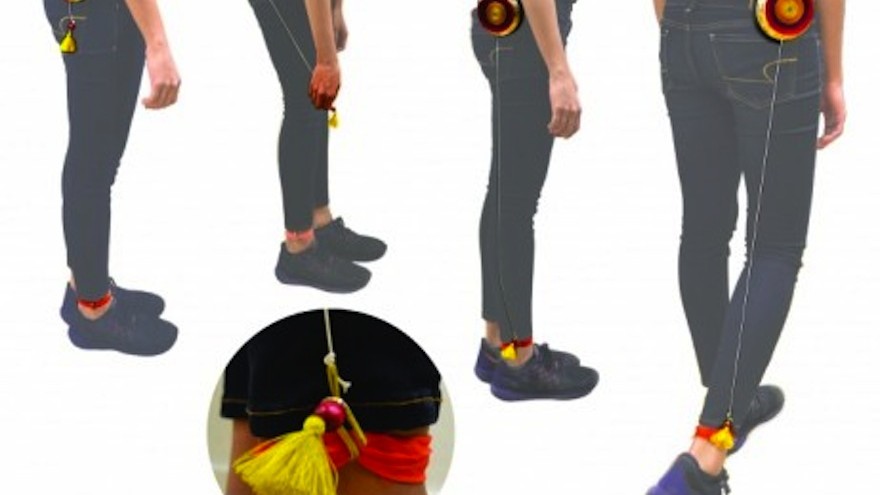Parsons The New School for Design graduate Yogita Agrawal has created Jhoule, a motion-powered device that provides a source of energy and light to off-grid communities in Chhattisgarh, India. Jhoule is a fusion of the English word for Joule (a unit of energy) and Jhool, the Hindi word for a swinging motion.
Jhoule is a locally manufacturable wearable device, which when hooked or strapped to the waist and a moving limb such as an ankle, harnesses the energy from the swinging action of the walking leg to drive a dynamo and charge a battery.
“The idea of Jhoule was born to tap into this widely available source of energy — the physically active lifestyle of rural India,” says Agrawal.
Jhoule is a product intervention that will allow the community to gain an additional advantage from the physical activities that they already perform.
The energy harvested during the day is stored and used to power the embedded LEDs, providing 3-4 hours of light after the sun sets. Agrawal designed Jhoule in response to the short transition from dusk to dark. In the tropical region of Chhattisgarh the sun sets in summer at 6:30 pm and 5:30 pm during winter.
In the evening, Jhoule can be strapped across a commuters chest to the light up the road and make the user visible to oncoming traffic in the absence of streetlights. At home, Jhoule can be suspended from of a nail in the wall and the LED can be used at its full brightness to allow children to study longer, food to be cooked in full light, and the family to bond.
Here’s the science: Jhoule uses human motion to spin the shaft of a DC motor, generating a voltage. By winding a string around the shaft, the string could be pulled to spin the shaft and generate voltage. Agrawal added a retractable mechanism to wind back the string and spin the motor both while unwinding and winding. If Jhoule is attached to the waist and ankle, the bending of the knee (whilst walking) extends and retracts the string, setting the connected internal gears into motion.
Agrawal worked with electronic engineers to develop a circuit that would be able to harness the current resulting from movements to charge a 2.4 Volt rechargeable battery.













